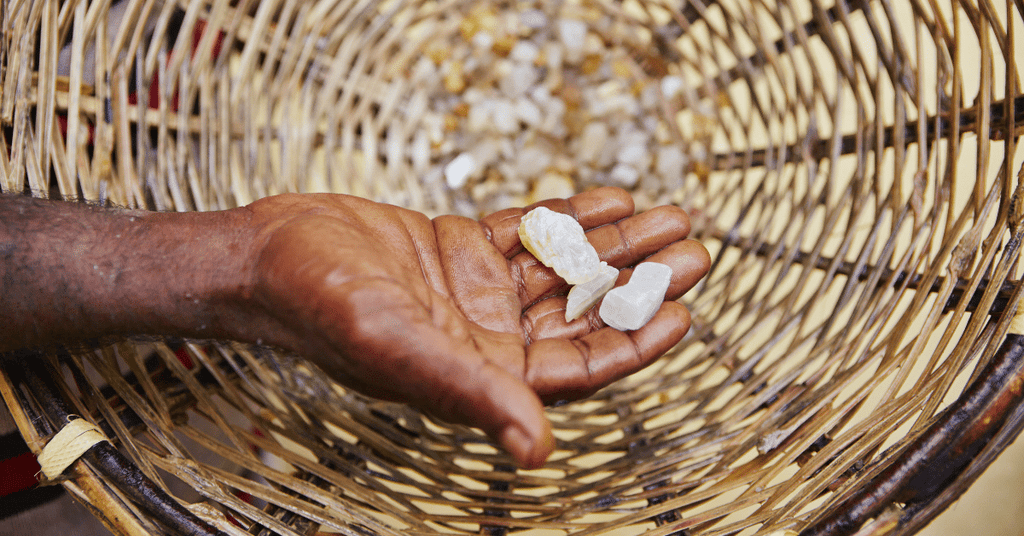
Working Hand in Hand: Environmental Conservation & Gemstone Mining

One major issue that has come to light in recent years is that of the colored gemstone mining industry and its impact on our global communities.
This raised awareness of the harmful effects caused by gemstone mining in the past has driven more consumers to be conscientious about where their jewelry products come from and how they are sourced. In result, we’re starting to see and increase in the use of terms like “fair trade” and “responsible” or “ethically-sourced” gemstones within the industry.
Although it’s good that there’s increased support for improved practices in gem mining moving forward, the negative impacts caused by past mining sites is substantial and can’t be ignored.
In order to put our best foot forward and promote a more sustainable industry, we need to examine the effects of past gemstone mining so we can achieve greater biodiversity conservation, ecological restoration, and the secured livelihoods of mining communities.
The Reality of the Gemstone Mining Industry Today

As we mentioned earlier, there’s been a noticeable increase in consumers supporting the Fair Trade Movement or ethical gem mining processes. That support has led to the implementation of mining regulations, more sustainable methods of extraction, and improvements for the mining communities at the base of the trade’s supply chain. These are all contributions that we, especially as an ethically conscientious jewelry brand, greatly appreciate, but the reality is that in order to achieve the goal of making gem mining a more sustainable and self-sufficient industry, we have to do more.
We can’t just simply look at the ethical or fair trade gem mines that are currently operating and find satisfaction in the fact that we’ve done all we can to prolong a more sustainable industry and environmental impact. We can have a greater potential impact by looking at approaches to resolve the consequences caused by gem mining in the past.
Today’s Market

Firstly, it’s important to know that less than 2% of gemstones circulated in today’s market were mined in the last two years.* That means that 98% of gemstones in circulation are decades old and are mostly the products of unethical mining in the past prior to the use of ethical gem mining methods and mining regulations.
Rather than just focusing on the 2% of gemstones in the market that might come from fair trade or more environmentally-friendly mines, we want to focus your attention on that 98% of old gemstones.
Gems Are Non-Renewable
Take in the fact that colored gemstones like emeralds, rubies, and sapphires are non-renewable resources, meaning that they can’t easily be replenished by nature and the process of forming natural gems takes many years.* Given that these resources are as finite as they are, it puts that much more emphasis on why we need to look for solutions for creating a more sustainable market. If we continued with the unethical practices of gem mining in the past, we’d have unresolved areas of environmental degradation all over the globe, destroyed mining communities, and unfair distribution of profits throughout the supply chain—the industry would eventually collapse.
The Solution
Well, how do we avoid this issue? We look at ways to use funding from the sales of old gemstones to offset the issues caused by past mining techniques. That funding can go towards making positive environmental changes like restoring old gem mining sites—many of which have been left still unable to recover for decades. Additionally, funding derived from the circulation of old gemstones can go towards improving the quality of life within the actual mining communities that produced those products. We found an example of this cited in a National Geographic article by Saleem H. Ali (Ali, 2012):
“When in 2008 rubies were discovered in the Niassa National Reserve in Mozambique, illegal ruby mining was seen as a serious threat to the conservation efforts in the area. But if conservationists and the gemstone industry could communicate with each other and work together, we could imagine that rubies from Mozambique could possibly be used to promote and fund elephant conservation in the region.”

How Colored Gemstone Mining Impacts the Environment & Global Communities
Now that you have a transparent picture of today’s gemstone market, let’s go back and review some of the negative impacts that unethical gem mining can have on the environment and the mining communities that extract gemstones.
In many of the areas where gemstones are mined, workers are often left using simple tools like shovels, sifting pans, or even their bare hands to extract gemstones because they live in poverty-stricken areas with limited resources. This might cause you to think, “Well, if they’re just using shovels and their hands, how could that possibly disturb the natural environment? It’s not like they’re using heavy-duty machines that create chemical pollution.” Despite the lack of major equipment like bulldozers and other construction vehicles on most mining sites, there’s still damage that takes place as a result of the gem extraction process.

Post-extraction, gem mines are typically left like the image seen above with no vegetation in sight, hundreds of digging holes (sometimes thousands), barren, and unable to produce any crops for many years. Once the holes are filled, it is possible for the land to replenish itself over time. However, many miners don’t bother with the process of refilling the holes they’ve dug out because it takes just as much time and money as it did to create the damage and they’re trying to earn as much money as they can as quickly as they can in order to provide for their families.
With that in mind, we can just imagine the obvious effects that these damaged areas of land have on the communities in terms of agriculture and sustainability. If they don’t refill these digging plots and the land isn’t suitable for growing crops, then the local mining communities have to look elsewhere to farm their food. But what happens when they run out of farming land to do that? Then they’re left with the options to stay in that area without any source of income or way of growing crops or they have to leave and go to a new mining area until that mining site is also depleted (typically in the span of a few years).
By supporting organizations or charities that put money back into mining communities through the circulation of old gemstones, we can promote their sustainability through projects that provide the miners with trade education, better environmental conditions, funding to restore mining sites post-extraction, and so much more.
The Challenges of Reforming Mining Practices
So it seems like there’s an opportunity to reform mining practices and provide a solution to environmental degradation—problem solved, right? Not quite. There are many issues that arise when talking about reforming mining methods, putting regulations in place, and encouraging major players in the jewelry industry to mobilize funds from gem sales back into mining communities.
Firstly, mining permit regulations are often not correctly implemented due to the fact that they’re not suited to the mining sector they’re applied to. This causes for there to be a lack of permits which leads to unethical mining (sometimes in areas like natural reserves where mining is technically illegal but the local government doesn’t enforce regulations).
The next issue is that a model mine that uses conservative techniques (ethical or fair trade mining) to extract gemstones can be a target of jealousy to neighboring miners or instill greed from local officials. This fear from being targeted and potentially having hard-earned resources taken away makes most mining communities hesitant to work with fair trade or ethical gem mining organizations that just want to help them.
Many of the challenges involved with reforming the gemstone mining industry are related to the geology of the minerals and their local governance issues—both of which are found to be the most restricting factors responsible for delaying the global implementation of Fair Trade-like frameworks for gemstones.
Redirecting Funding to Sustain Mining Communities

Curious to learn more about organizations that already are working to redirect funds back into mining communities or environmental projects? Take a look as some we found listed below!
Gem Legacy
Gem Legacy is a non-profit charity that supports miners, children, and communities in East African-colored gemstone mining regions. Their goal is to create lasting local benefits from the sourcing and mining of gemstones.
Moyo Gems
Moyo Gemstones is an ethical gemstone collaboration rooted in Tanzania. They work with female artisanal gem miners of the Umba Valley to extract rubies, sapphires, tourmaline, garnets, citrines, and amethysts, moving them directly from the mine to the market. This organization helps to empower female miners by improving their working conditions, knowledge of gemstone mining, financial security, and chances at creating a more sustainable market and future for their villages.
Virtu Gem
This project connects female artisanal gem cutters and miners in Malawi and Zambia with international buyers. This direct connection between the actual miners of the gems and those purchasing them helps to ensure that funds from those gem sales go directly back to the mining communities. The funds are then used to help better the quality of life for those communities and put into projects like food drives or market training.
We hope that in reading this article, you achieved a new perspective on the current realities of the gemstone mining industry. It’s our goal that you’ll use this newly found knowledge to help spread awareness about the potential benefits of continuing to support fair trade or ethical gemstone suppliers. Additionally, we’d like for you to encourage your friends, family, and other interested parties to look into ways they can support funding projects using the sale of old gemstones that would help sustain the industry, ethical practices, and mining communities involved in the trade.
If you liked this article, feel free to browse through other similar publications on our site. Or, if you want to learn more about a specific topic and have questions, please feel free to send us an email at info@hanjijewelry.com so our team can assist you!
Resources:
Ali, S. (2012, January 12). Conservation Gemstones: Beyond Fair Trade? National Geographic. Retrieved January 7, 2021, from https://blog.nationalgeographic.org/2012/01/12/conservation-gemstones-beyond-fair-trade/
Gem Legacy. (n.d.). Retrieved January 08, 2021, from https://www.gemlegacy.org/
Moyo Gems. (n.d.). Retrieved January 08, 2021, from https://moyogems.com/
Virtu Gem. (n.d.). Retrieved January 08, 2021, from https://www.virtugem.com/






